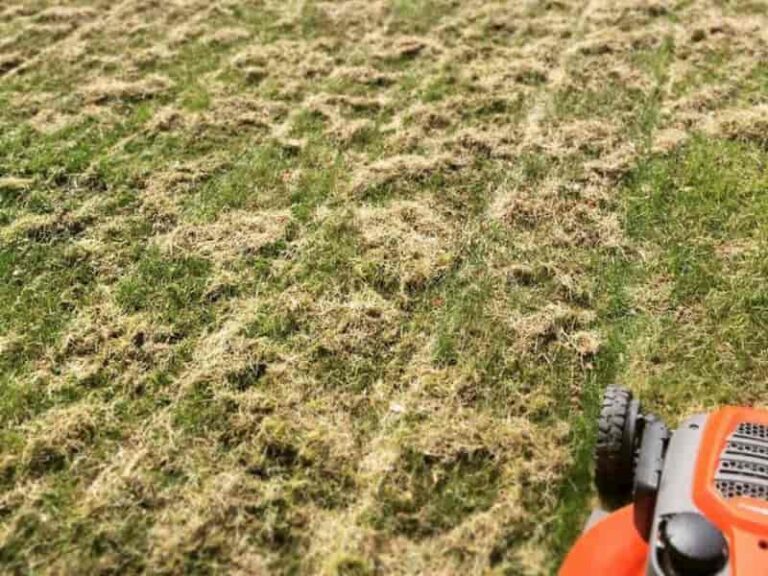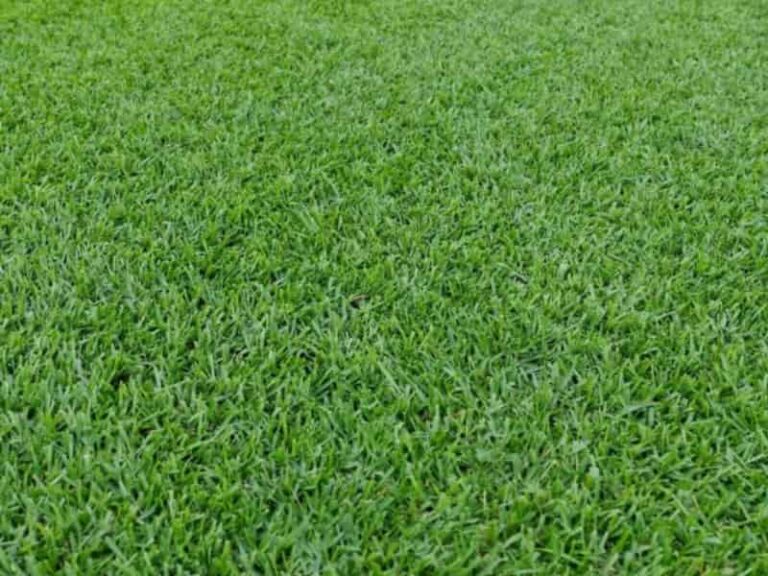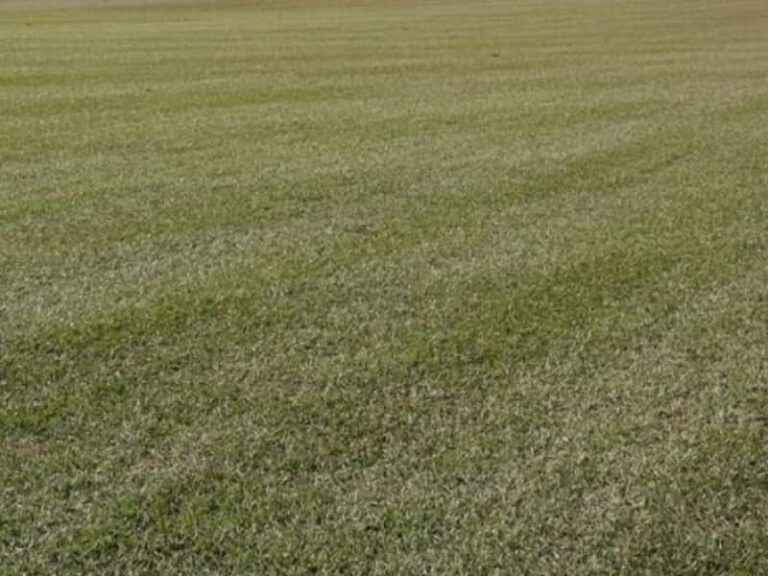Centipede Grass – Identification, Care, Planting, Cost & More
If you’re looking for a beautiful turfgrass for your lawn that doesn’t need too much maintenance, look no further than centipede grass. This unique turfgrass has several advantages over other common turfgrasses.
In this blog, we’ll look at how to identify centipede grass, as well as how to propagate it and its maintenance requirements.
What is Centipede grass?
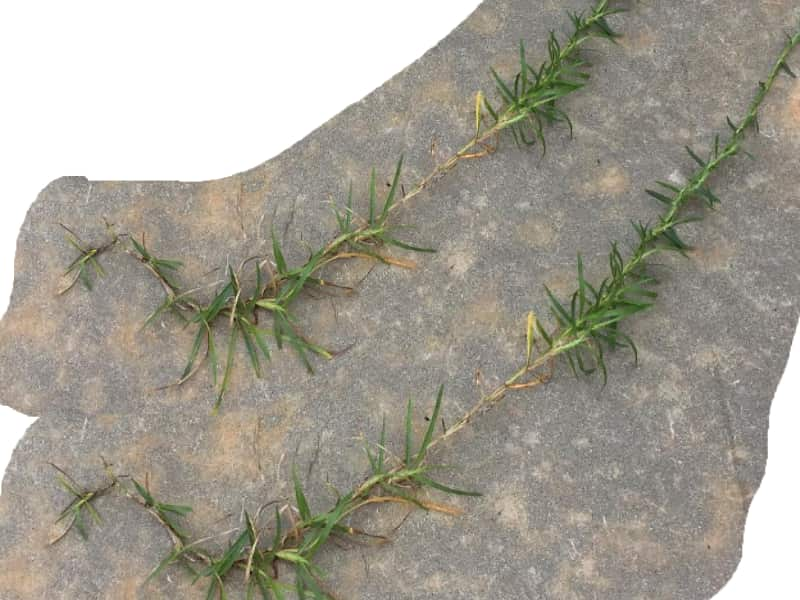
Centipede grass is native to the Far East and was introduced to the US during the earlier part of the 20th century. It has since gained popularity amongst Americans due to its high tolerance for low-fertility soil and low maintenance requirements. This warm-season turfgrass also has decent pest resistance when properly managed and is well-adapted to sandy, acid soils.
Note: Centipede grass is also known as ‘lazy man’s grass’ due to its ability to thrive even in low maintenance conditions.
How to Identify Centipede Grass (with pictures)
Centipede grass has a natural apple-green color but may have a darker shade of green in highly fertile soils. You can easily identify this grass by the features of its leaves, stems, flowers, roots, and growth habit:

Leaves
Centipede grass leaves are flat, medium-coarse textured, short (15-30 mm), and about 0.25 inches wide. They also feature a robust mid-vein, a sharply pointed tip, and a few hairs along the margins and at the base.
Centipede grass has folded vernation; that is, the leaves are folded in the bud. Meanwhile, the collar is continuous, has tufts of hair at the lower edge, and lacks auricles.
Note: It’s easy to confuse centipede grass for St. Augustine grass, as both have a vivid green shade and are warm-season grasses. However, the latter has a broader leaf blade with an opposite leaf arrangement. Centipede grass leaves alternate along the length of the stem.
Stems/sheaths
Centipede grass has a slender, short, green stem (culm) that has a smooth (glabrous) texture and grows erect, no taller than 1m high. Sheaths with overlapping margins clasp onto the upright stems.
The sheaths are pubescent (have tufts of hair) at the throat. Meanwhile, the ligule is a short, ciliate membrane with fine hairs that are 0.02 inches long.
Flowers
The centipede grass seed head is a thin, spiky raceme that’s 3-5 cm long and purple-colored. The raceme produces spikelets that are wide at the base and alternate in two rows. Meanwhile, the fruit is a narrow, elliptical caryopsis that’s about 2mm long.
Centipede grass flowers bloom in the summer, with the seedheads protruding slightly above the leaf blades.
Roots/Growth Habit
Centipede grass grows via above-ground lateral runners called stolons to form a thick turf. However, this creeping turfgrass has a slow growth rate. Upright shoots sprout from the horizontal stolons, giving the grass a centipede-like appearance, hence the name ‘centipede grass’.
Note: Centipede grass lacks rhizomes and has a shallow root system.
How to Establish Centipede Grass Lawn
Centipede grass produces viable seeds and can be propagated by seeding. Alternatively, you can establish a centipede grass lawn via vegetative means such as sodding, plugging, and sprigging.

Seed
To successfully establish a centipede grass lawn from seed, consider the seed quality and the soil conditions before planting. Choose high-quality seeds with a purity of 90% or higher and a germination rate of 85%. Also, rototill and pulverize the soil with a rototiller and a rake to mix organic matter into the soil and relieve compaction.
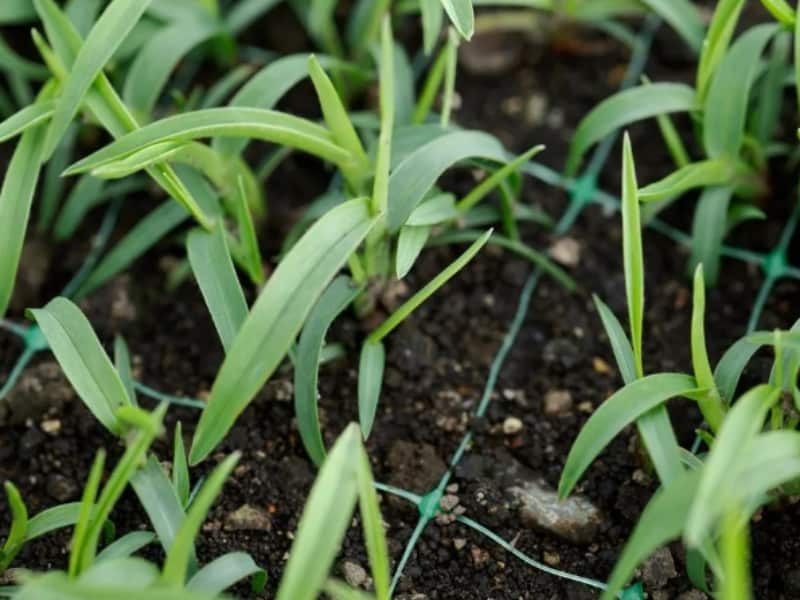
Then, mix one pound of centipede grass seed with 20 pounds of sand and spread the mixture over the bare lawn. The ideal seeding rate for this turfgrass type is 0.25-0.5 pounds of seed per 1000 square feet of lawn area.
Note: When planting grass seeds, spread the seeds in two directions, one perpendicular to the other. This approach ensures uniform seed distribution.
After broadcasting over the whole area, firm the lawn with a roller and irrigate lightly to kickstart germination. Centipede grass is a slow grower that takes 2-3 weeks to germinate. It’s advisable to keep the lawn moist (but not wet) for the entire germination period. Additionally, mulching after planting helps to prevent erosion and loss of seed during the germination period.
The best time of the year to establish a Centipede grass lawn by seeding is from April to July. This ensures a longer growing season so that the turf becomes fully established before the first frost. With proper management, you’ll obtain full ground cover within three months.
Sod
The fastest way to establish a centipede grass lawn is by sodding. For higher chances of success, ensure you only use high-quality sod varieties that are pest-free and disease-resistant. Deeply water the area before laying down the sod. When installing the sod, ensure you don’t leave spaces between the sod pieces. Deeply water the turf again after installation. Finally, roll over the turf with a roller to level the sod and establish firm contact between the sod and the soil.
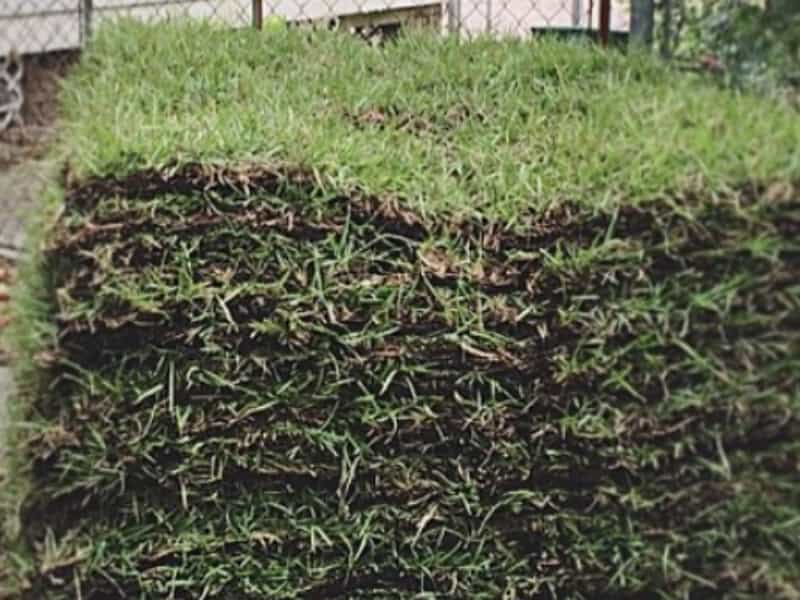
Centipede grass sod pieces take about a week to firmly establish their roots in the soil. Ensure you irrigate the lawn at least once per day during this period. The recommended watering rate is 0.5 inches of water daily.
Plugs and sprigs
You can also establish a vegetative centipede grass turf from sprigs and plugs, and it is best done from spring to early summer. However, this is a more laborious approach than seeding or sodding. Follow the steps below to establish centipede grass from sprigs properly:
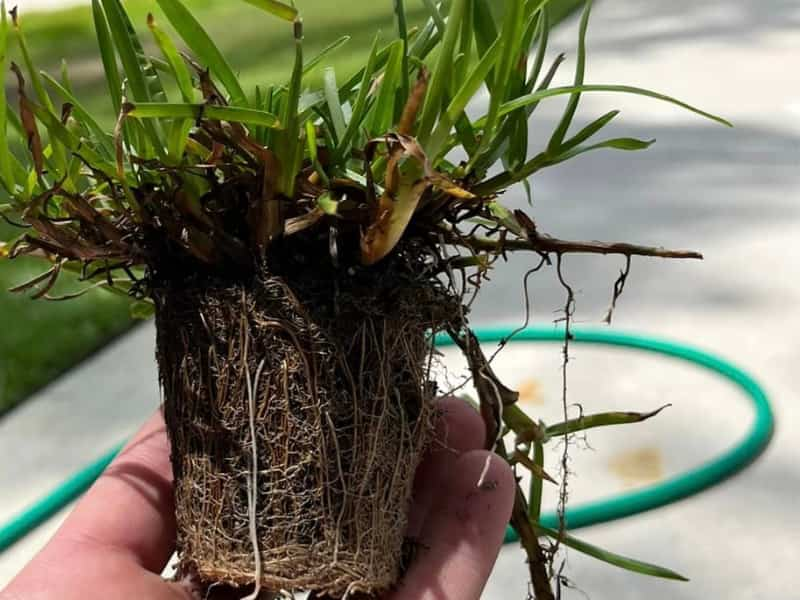
i. Dig 2-inch deep furrows 6-12 inches apart.
ii. Plant centipede grass sprigs in the furrows, ensuring the nodes are in contact with the soil.
iii. Finally, cover the furrows and water the area until it’s moist but not wet.
Centipede grass sod plugs are also planted much in the same way as sprigs. Plant sod plugs in rows approximately one foot apart. Sod plugs need to be watered regularly for the first 14 days post-planting.
Centipede Grass Care and Maintenance
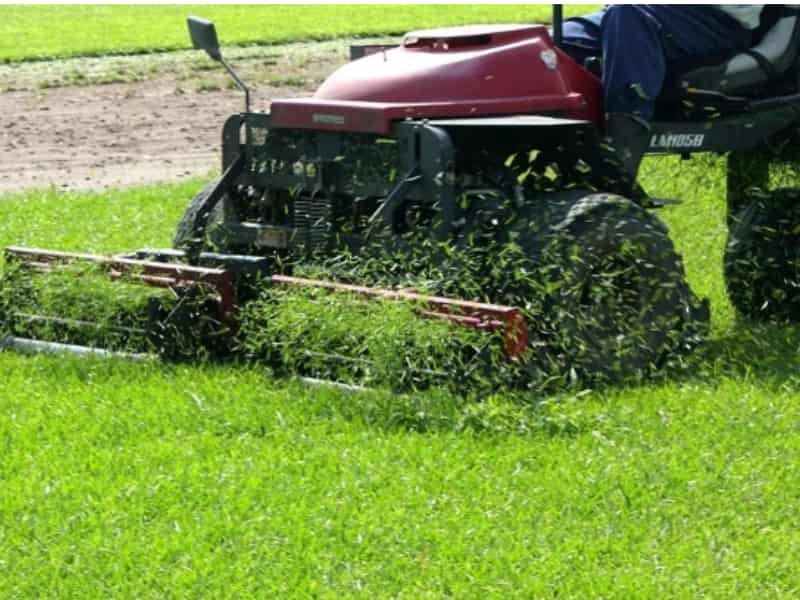
Watering
Once your centipede grass lawn is established, ease down on the watering frequency. Instead, water less frequently but deeply every time you do so. This will encourage deeper, more robust root growth that can withstand intermittent drought. As a rule of thumb, water only when the turf shows signs of drought stress, like wilting and leaf discoloration, and apply to a depth of six inches.
You can water up to eight inches deep and more frequently for sandy soil. You should also irrigate your centipede grass lawn during the dry winter months to prevent desiccation.
Note: Light, frequent watering leads to shallow rooting of centipede grass and should be avoided.
Fertilization
Fertilizer can improve the quality of centipede grass turf, but only if you adhere to the correct amounts. Overfertilizing this turfgrass using a nitrogen-rich fertilizer causes turf problems such as centipede grass decline, reduced cold tolerance, and increased vulnerability to pests and diseases.
Feed the turf with a potassium-rich fertilizer (2-1-2 ratio) in the spring to boost root development in sandy and potassium-deficient soils. Fall application of 2-1-2 or 3-1-2 fertilizer is also recommended, as it reduces winterkill. Centipede grass is susceptible to winter dieback, especially in the northern regions with frosty winters.
Note: Avoid using a phosphorus-rich fertilizer on centipede grass, as it exacerbates iron deficiencies. Meanwhile, iron chelate is recommended for centipede grass that has developed chlorosis. And if you prefer a richer color on your centipede grass turf, apply one pound of nitrogen fertilizer per 10000 square feet during the summer.
Tip: Centipedegrass will grow best at a pH of 5.5 to 6.0. Always add fertilizer, lime, or sulfur, based on soil test results.
Mowing
Adopt the correct mowing practices to enhance the quality of your centipede grass lawn. This entails mowing at the right height and frequency.
Centipede grass is a low-maintenance turfgrass and will thrive even when mowed infrequently. The ideal mowing height for centipede grass is 1-1.5 inches, ensuring not to remove more than 30% of the surface area of the grass leaf blades at any one time.
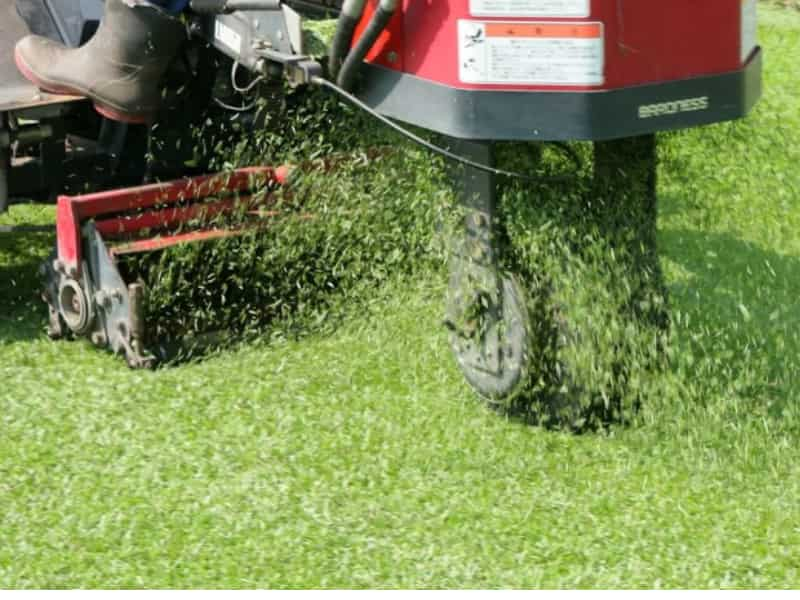
Avoid mowing this turfgrass below 1 inch, as the turf density will reduce, and thinning will occur, resulting in a visually unappealing lawn. Similarly, avoid mowing too high, leading to thatch buildup and turf injury through cold weather exposure.
Ensure the mower blades are sharp before mowing centipede grass since blunt blades will cause physical damage, and this turfgrass is a slow grower that doesn’t recover quickly from injury.
Other care and maintenance activities to incorporate include:
Centipede grass Varieties
There are several varieties/cultivars of centipede grass:
- Common centipede grass- this is an undeveloped and unimproved variety that sod suppliers commonly sell.
- Covington centipede grass- this variety has an attractive emerald green color and stays green long into the cold season.
- TifBlair- this cultivar grows relatively faster and has better cold tolerance than other centipede grass varieties.
- Centennial- this cultivar has better salt tolerance than other centipede grass varieties.
- Santee- has great cold tolerance but can only be propagated vegetatively.
Centipede Grass Pests
Centipede grass is vulnerable to various pests and insects, most notably nematodes. Other common pests include white grubs, chinch bugs, and ground pearls. Most of these pests can be easily controlled with chemical pesticides and insecticides.
- Nematodes– centipede grass is highly susceptible to various nematodes, including ring, root-knot, sting, and lance nematodes. In large numbers, these worms cause wilting, thinning out, and browning. If you suspect a nematode infestation in your lawn, send a soil sample to the Plant Diagnostic Laboratory. If the diagnosis results are positive, remove the nematodes using a fluopyram-based nematicide.
- White grubs– these pests attack centipede grass roots, resulting in wilting and the formation of brown patches. To eliminate white grubs, use a chemical pesticide such as carbaryl.
- Chinch bugs– these pests suck the sap on centipede grass tissue, resulting in stunted growth and circular brown spots on the lawn. Treatment mainly entails using insecticides, but you can lower the chances of infestation through practices like dethatching and aeration.
- Ground pearls– these insects are active from spring to early summer and feed on the juice in the roots of centipede grass, resulting in leaf yellowing, brown patches, and turf dieback. You can easily get rid of ground pearls using insecticides.
Centipede Grass Diseases
The most common centipede grass diseases are dollar spot and large patch. Dollar spot causes white spots with brown margins to appear on the leaf blades. Large patches, on the other hand, are characterized by circular patches of dying turfgrass.
These are fungal diseases and can both be controlled with fungicides. Meanwhile, you can lower the chances of infection through various practices, including mowing at the right height (no lower than 1 inch), dethatching, and aeration.
Other Problems with Centipede Grass
Apart from pests and diseases, other issues commonly associated with centipede grass include weeds and decline.
Weeds Invasion
Weeds make the lawn unsightly, especially during winter when they become more conspicuous. Common centipede grass weeds include broad leaves like henbit, dandelions, and chickweed, as well as grassy weeds like crabgrass. Apply an Atrazine-based, selective, post-emergent herbicide in the fall to kill broad-leaf weeds and a Pre-emergent herbicide in the Centipede grass.
Centipede Grass Decline
Centipede-grass decline is a phenomenon whereby yellow spots or dead patches of turf appear on the lawn in the spring. It’s caused by a combination of factors, including high soil pH, excessive thatch buildup, over-fertilization, herbicide damage, disease, and nematodes.
Here are some practices you should adopt to prevent centipede-grass decline:
- If your lawn soil is sandy and the pH is above 6.5, or if it’s heavy clay and the pH is above 7.2, apply elemental sulfur to lower the pH level.
- Mow the lawn at the right height (1-1.5 inches). Mowing higher than 1.5 inches encourages thatch buildup.
- Avoid applying excess nitrogen fertilizer. Don’t exceed one pound of nitrogen for every 1000 square feet of lawn area.
- Use selective herbicides that will kill weeds but won’t damage the desirable turf grass.
Note: Most centipede grass cultivars also have poor salt tolerance and poor wear tolerance.
Uses of Centipede Grass
- Centipede grass has an attractive light green color and is used as lawn turf in regions with acidic soils, as it thrives in soils with a pH of 4.5-6.5. It also has good shade tolerance and does well as ground cover on partially shaded lawns.
- Centipede grass is recommended for homeowners who don’t want to invest too much time and money in maintenance, as this turfgrass has low maintenance requirements. It doesn’t need to be mowed or watered frequently.
- Centipede grass can be used in lawns, parks, golf courses, and pastures.
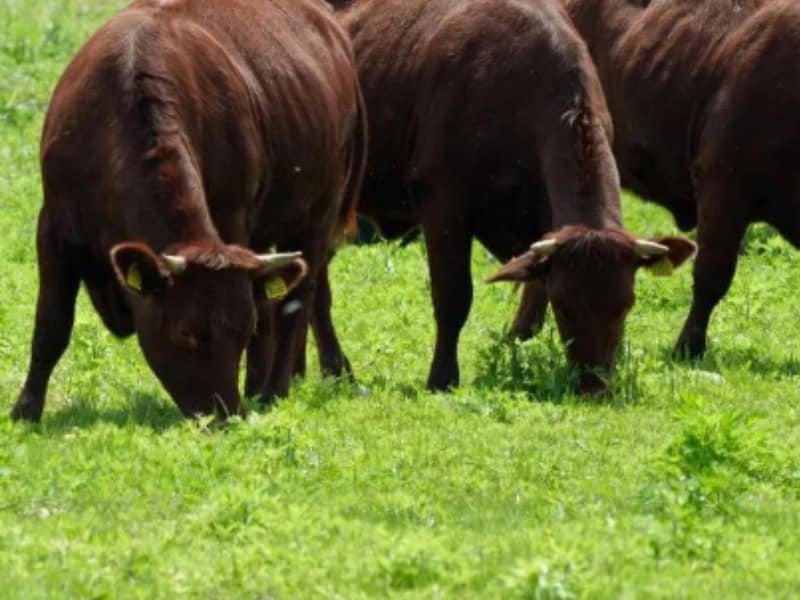
Read More: Centipede Grass vs Bermuda Grass
How much does labor cost to seed a lawn?
The labour cost for seeding lawn varies depending on factors like, size of the lawn, location and scope of work. However in average the cost for a basic seeding job costs beteen $0.10-$0.25 per sq ft while professional landscaping companies may charge between $ 40-$70 per hour. For new lawns the cost including landscaping up to planting may vary between $200-$500$ for basic New York centipede lawn. We advise getting quotes from local landscapers is the best way to estimate costs for your specific lawn.
What is the application rate for centipede grass seed?
When seeding a centipede lawn, it is important to follow the seeding rate. Typically use 4-6 lbs per 1000 sq ft when establishing new lawns and 2-3 lbs per 1000 sq ft if overseeding existing lawns in early fall. This would help establish a thick centipede lawn free from patchy growth due to underseeding and other problems like diseases and fungus in case of overseeding.
A bag of 50lb should cover between 8500 sq ft to 25000 sq ft(1lb should cover between 160 sq ft to 500 sq ft).
What is the best time to plant centipede grass seed?
The optimal time to establish a new lawn is from late April to June, when soil temperatures are warm enough for optimal germination and growth. From September to mid-October, the soil temperature tend to be moderate to allow seed germination and root establishment with minimal growth before winter dormancy.
When overseeding lawns , early fall is the best time to seed in the bare to thin areas, whereas in Florida and southern climates, November can be the best time to plant centipede grass for late fall.
References
i. J. B. Unruh, A. J. Lindsey, and M. Schiavon: Centipede grass for Florida Lawns.
T. Davies, J. Williamson: Centipedegrass maintenance calender

